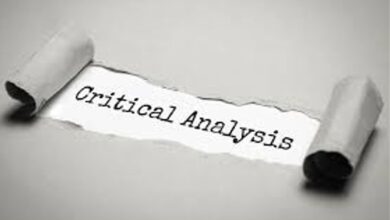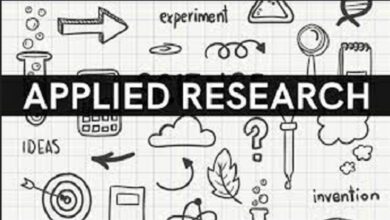What is research definition characteristics purpose Methods
The definition of Research is as the careful consideration of the study of a particular concern or problem using scientific methods. Research is a systematic inquiry to describe, explain, predict and control the observed phenomenon. It involves inductive and deductive methods.
In this way, research is a thorough and detailed study of a specific problem, concern, or question using the scientific method. The best way to achieve this is to turn the problem into a question, with the intention that the research answers the question.
How do we start to Research something?
To start researching something, you have to have a problem, a concern, or an issue that has become a question. Also, these can come from observation of the world, from previous research, from the professional literature or from peers. Research really begins with the right question, because your question must have an answer. Questions like “How can I cure cancer?” cannot be answered with a study. It is too vague and cannot be checked.
The research begins by asking the right questions and choosing an appropriate method to investigate the problem. After collecting the answers to your questions, you can analyze the results or observations to draw reasonable conclusions.
In order to make sense of your research and gain insights faster, it helps to use a research repository as the single source of truth in your organization and manage your research data in a centralized repository.
Having a question creates an internal state of “I need to know something.” Inductive research methods analyze an observed fact, while deductive methods verify the observed fact. Inductive approaches are associated with qualitative research, and deductive methods are more commonly associated with quantitative analysis.
The scientific method
Research is a process to discover new knowledge. Research is different from other ways of discovering knowledge (like reading a book) because it uses a systematic process called the Scientific Method.
The Scientific Method consists of observing the world around you and creating a hypothesis about relationships in the world. A hypothesis is an informed and educated prediction or explanation about something. Part of the research process involves testing the hypothesis and then examining the results of these tests in relation to the hypothesis and the world around it.
Therefore, when a researcher formulates a hypothesis, it acts as a map throughout the research study. It tells the researcher which factors are important to study and how they might be related to each other or caused by a manipulation the researcher introduces (for example, a program, a treatment, or a change in the environment). With this map, the researcher can interpret the information he collects and draw solid conclusions about the results.
How can an Research be carried out?
Research can be done with humans, animals, plants, other organisms, and inorganic matter. When research is done with humans and animals, it must follow specific rules about the treatment of humans and animals that have been created by the United States Federal Government. This ensures that humans and animals are treated with dignity and respect, and that research causes minimal harm.
Research Value
Regardless of the topic being studied, the value of research depends on how well it is designed and conducted. Therefore, one of the most important considerations in conducting good research is to follow the design or plan developed by an experienced investigator called a Principal Investigator (PI). The PI is in charge of all aspects of the research and creates what is called a protocol (the research plan) that everyone conducting the research must follow. In this way, the IP and the public can be sure that the research results are real and useful to other scientists.
What are the characteristics of the Research?
Good research follows a systematic approach to obtain accurate data. Likewise, researchers must practice ethics and a code of conduct while making observations or drawing conclusions.
Analysis is based on logical reasoning and involves both inductive and deductive methods.
Real-time data and insights are derived from actual observations in natural settings.
An in-depth analysis of all the data collected is carried out so that there are no anomalies associated with them.
A way is created to generate new questions. Existing data helps create more research opportunities.
It is analytical and uses all available data so that there is no ambiguity in the inference.
Accuracy is one of the most critical aspects of research. The information must be accurate and correct. For example, laboratories offer a controlled environment to collect data. Likewise, the accuracy is measured in the instruments used, the calibrations of the instruments or tools and the final result of the experiment.
The analysis of the research must be based on logic and must include both inductive and deductive methods in order to have a balanced view of the subject studied.
Data and practical knowledge must be derived from naturalistic observations made by researchers.
To ensure that there are no anomalies or biases affecting the research, the researchers must perform an in-depth analysis of the data collected.
Good research always creates a path for researchers to generate new questions and further explore the topic, leading to more research opportunities in the future.
Good research also makes use of all available data to ensure the accuracy of the inferences from the analysis.
In the same way, good research focuses on accuracy. It is essential that the information collected for the research is accurate and unbiased. Therefore, to ensure accuracy, the tools used in the research, their calibrations, and the final results of the research help to assess the accuracy of the study.
What is the purpose of the Research?
There are three main purposes:
exploratory
As the name suggests, researchers conduct exploratory studies to explore a set of questions. The responses and analyzes may not offer a conclusion to the perceived problem. It is carried out to treat new problem areas that have not been explored before. For this reason, this exploratory process lays the foundation for more conclusive data collection and analysis.
Descriptive
It focuses on expanding knowledge about current issues through a data collection process. Descriptive research describes the behavior of a population sample. For this reason, only one variable is required to perform the study. The three main purposes of descriptive studies are to describe, explain, and validate the findings. For example, a study conducted to find out whether top management leaders in the 21st century have the moral right to receive a substantial sum of money from company profits.
explanatory
Causal or explanatory research is carried out to understand the impact of specific changes to existing standard procedures. Conducting experiments is the most popular way. For example, a study being conducted to understand the effect of rebranding on customer loyalty.
Research Methods
Research methods are broadly classified into qualitative and quantitative. Both methods have different properties and data collection methods.
Qualitative methods
It is a method that collects data using conversational methods, usually open questions. The responses collected are essentially non-numerical. This method helps the researcher to understand what the participants think and why they think in a certain way. Types of qualitative methods include:
one-on-one interview
Discussion groups
ethnographic studies
Text analysis
Study of cases
Quantitative methods
Quantitative methods deal with numbers and measurable forms. Uses a systematic way of investigating events or data. Answer questions to justify relationships with measurable variables to explain, predict, or control a phenomenon. Types of quantitative methods include: surveys, descriptive research, and correlational research.
Therefore, remember that research is only valuable and useful when it is valid, accurate, and reliable. Incorrect results can lead to lost customers and decreased sales.
Data Requirements
It is essential to ensure that your data is:
Valid – founded, logical, rigorous and impartial.
Accurate – without errors and with the necessary details.
Reliable – other people doing the same research can produce similar results.
Timely – current and collected in a timely manner.
Complete – includes all data needed to support decisions
Tips for Conducting Accurate Research
Identify the main trends and issues, opportunities and problems that you observe. Write a sentence that describes each of them.
Keep track of how often each major find appears.
List your findings from most common to least common.
Evaluate a list of the strengths, weaknesses, opportunities and threats that have been identified in a SWOT analysis.
Prepare conclusions and recommendations about your study.
Act on your strategies
Look for gaps in information and consider additional studies if necessary
Plan the review of the results and consider efficient methods to analyze and dissect the results for interpretation.
Therefore, you should review your goals before drawing any conclusions. Also, consider how the process you’ve completed and the data you’ve collected help answer your questions. Also, ask yourself if what your analysis has revealed makes it easy to identify your conclusions and recommendations. We hope that you have understood the definition fo research.



